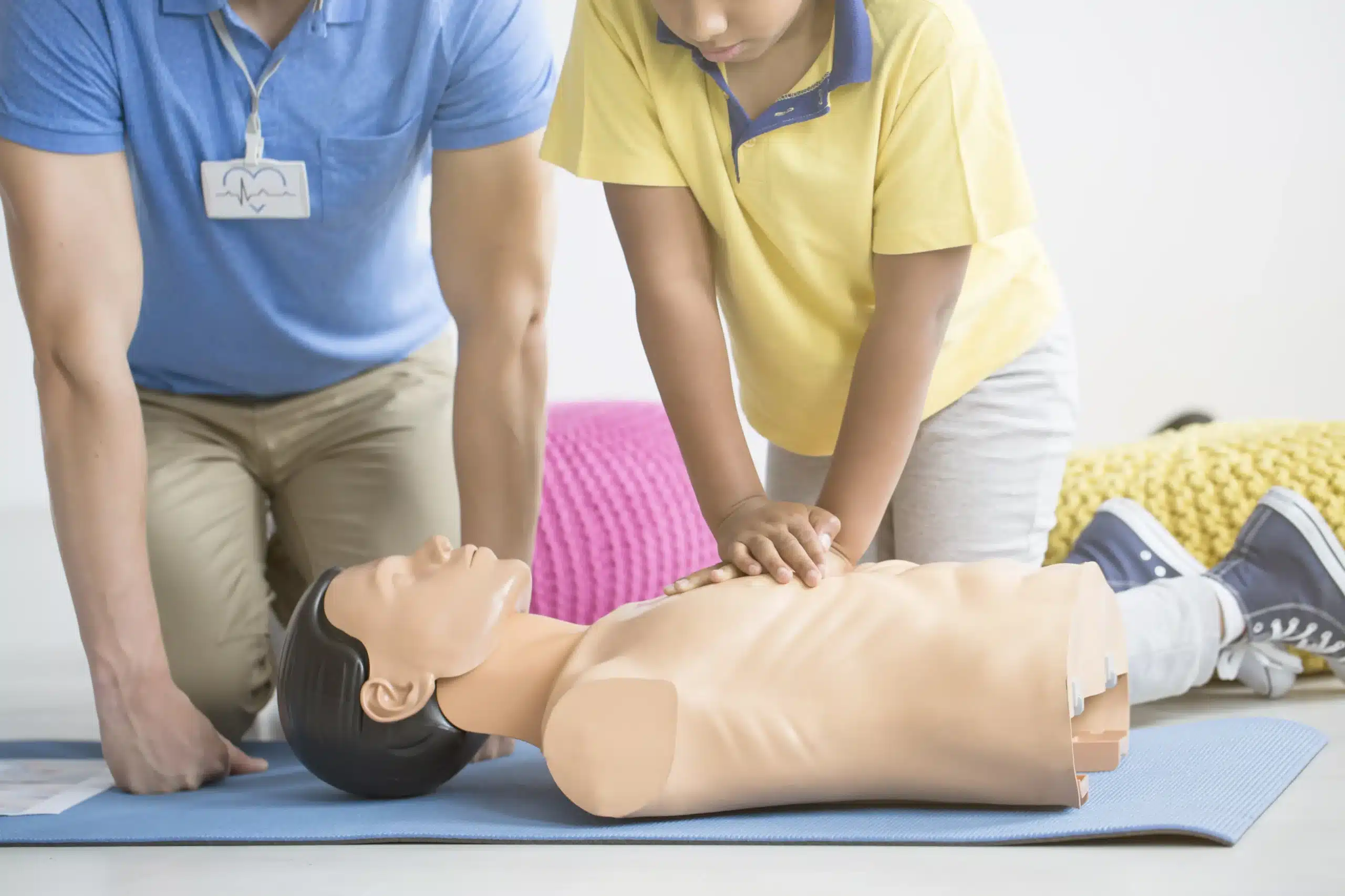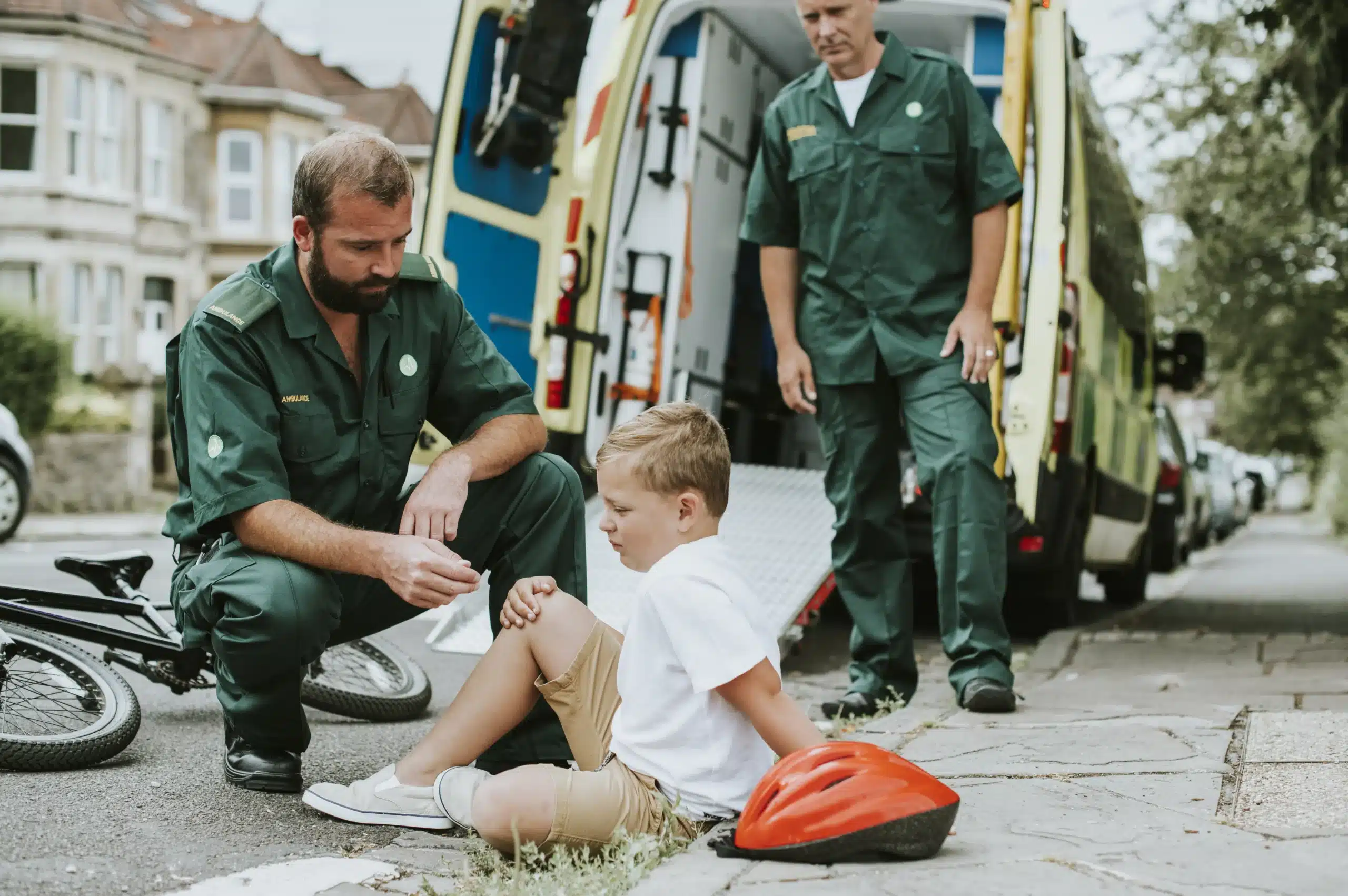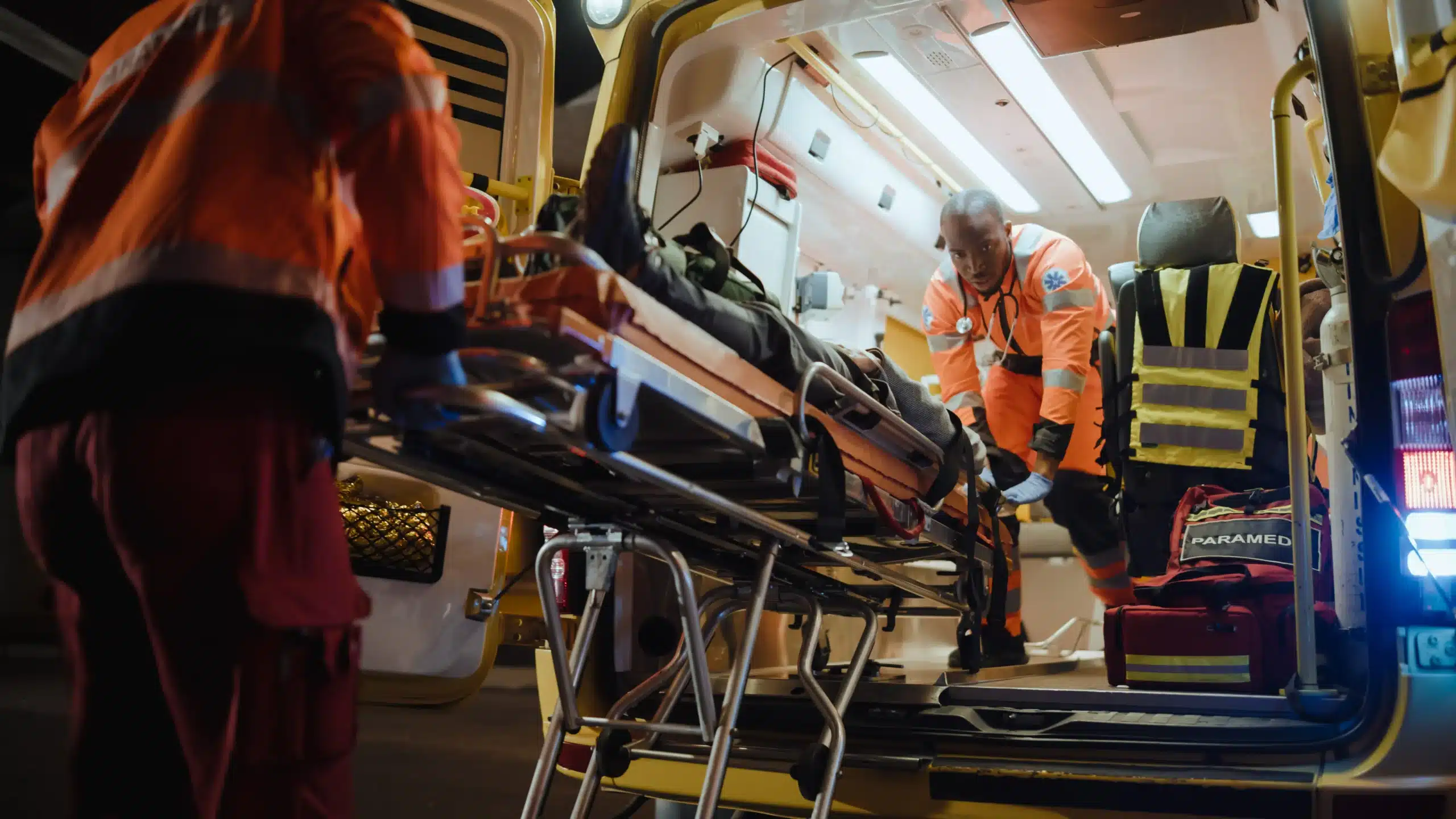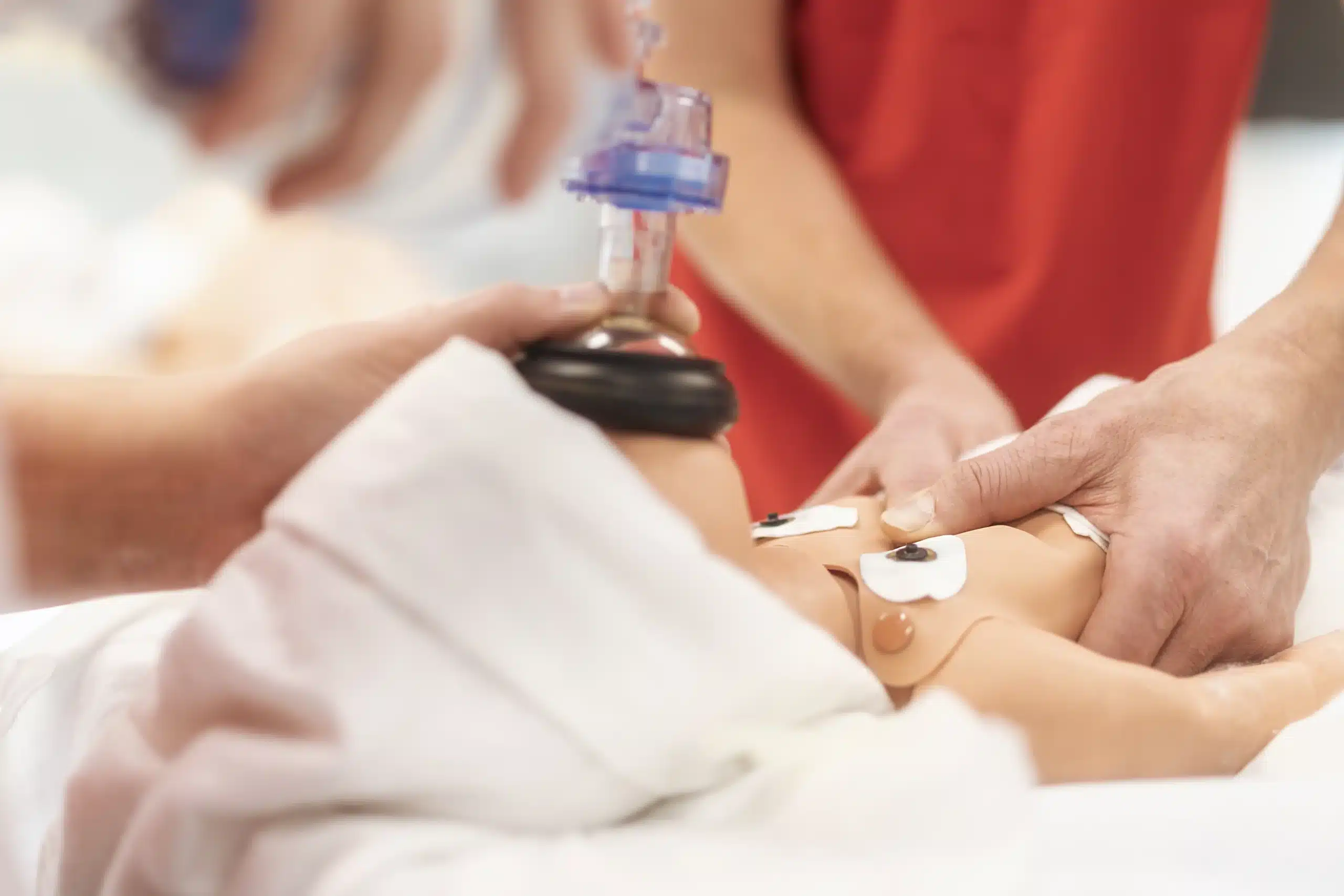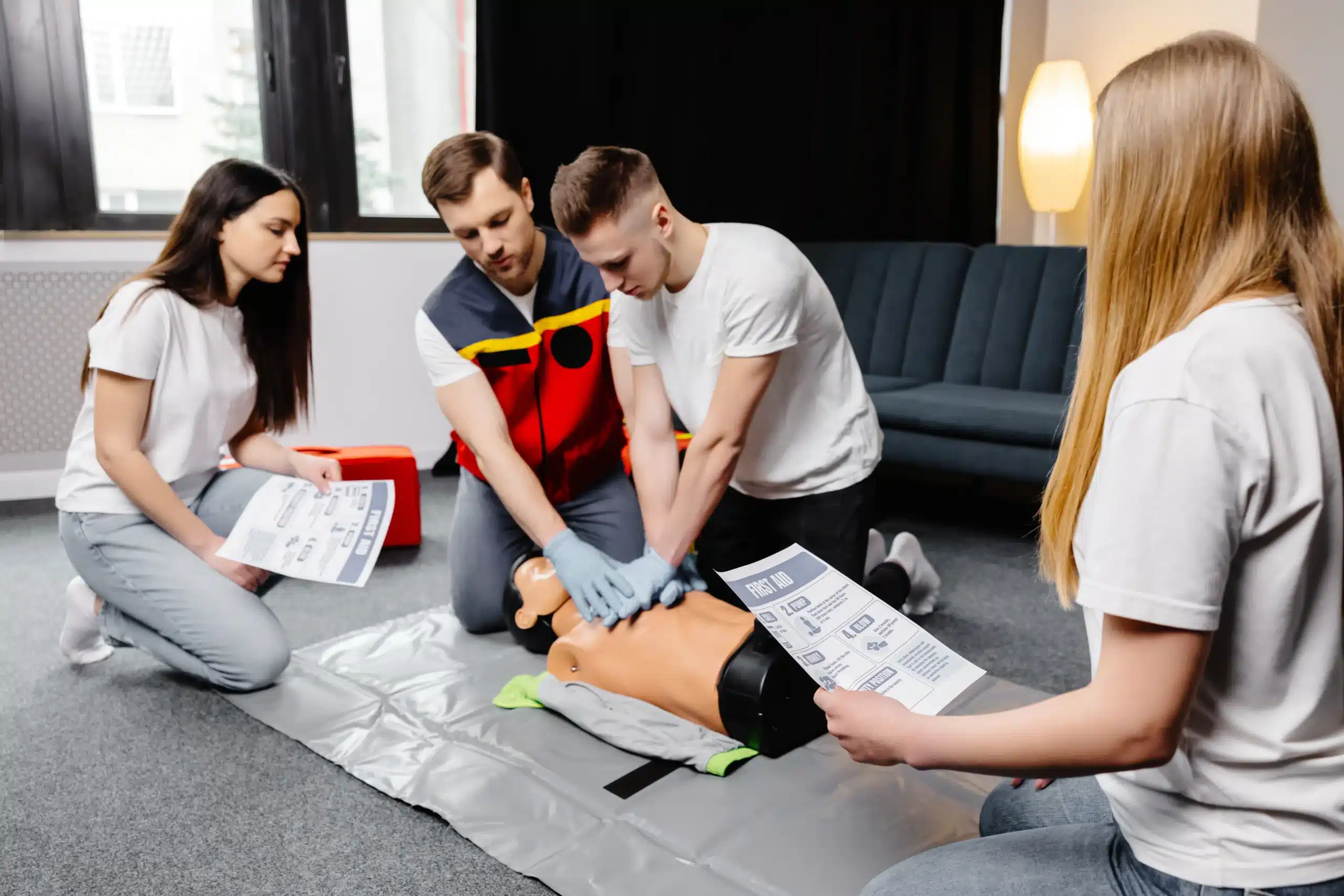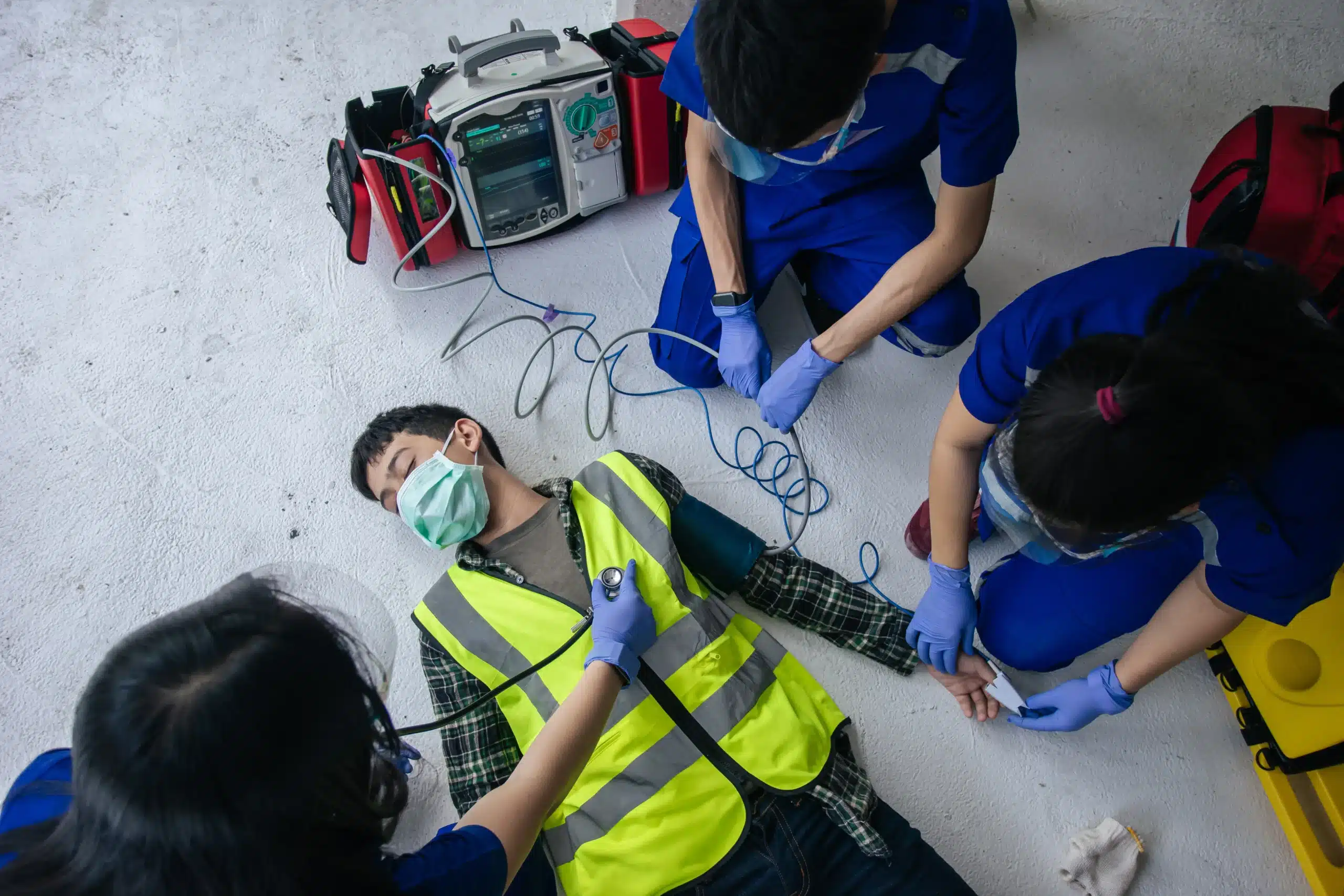Working in healthcare, you know how quickly protocols and best practices evolve. Staying sharp with your Basic Life Support (BLS) skills is crucial, not just for your patients but for your own confidence in critical situations. Recertification isn’t just a box to check; it’s a commitment to providing the highest quality care. This guide is designed to make the process as painless as possible. Whether you’re searching for “BLS recertification near me” or exploring online options, we’ll help you find the perfect course, understand the requirements, and prepare for a successful renewal. We’ll also address common misconceptions, discuss costs and discounts, and highlight the importance of ongoing support after you’ve recertified.
Key Takeaways
- Regular BLS recertification ensures you have the most current life-saving skills. Find a course—online, in-person, or hybrid—that works for you.
- Research providers, compare options, and check for AHA alignment when choosing a course. Consider factors like reputation, accreditation, and available discounts.
- Prepare by reviewing materials, practicing key skills, and creating a study plan. Look for providers offering continued support beyond the certification course.
What is BLS Recertification?
What is BLS & Why Recertify?
Basic Life Support (BLS) certification equips healthcare providers, and anyone interested in learning life-saving skills, with the knowledge and techniques to respond to life-threatening emergencies. It emphasizes early recognition and intervention, including high-quality CPR and other essential life-saving skills. Think of it as your toolkit for responding to cardiac arrest, respiratory distress, and other emergencies. BLS certification is a crucial credential for healthcare professionals and increasingly important for anyone working with the public. Why recertify? Because guidelines and best practices change, maintaining your certification ensures you’re up-to-date and confident in your abilities. BLS Certification demonstrates a commitment to providing the highest standard of care. Recertification offers significant benefits, including improved resuscitation practices, proficiency in high-quality chest compressions and rescue breaths, and increased confidence in recognizing and responding to emergencies. Ultimately, staying current with your BLS certification increases the chances of saving lives. You can learn more about the benefits of BLS recertification here.
Common BLS Recertification Misconceptions
One common misconception is that BLS certification is only for emergency responders like paramedics and EMTs. This isn’t true. Many healthcare professionals, including nurses, dentists, and physical therapists, require BLS certification. It’s also beneficial for teachers, coaches, personal trainers, and anyone who wants to be prepared to help in a medical emergency. Another myth is that obtaining BLS certification requires a huge time commitment. While it does require dedicated study and practice, many providers offer streamlined courses that fit busy schedules. Some providers, like Morgan Hill CPR Classes, offer a low price guarantee and group discounts to make training more accessible. Many healthcare providers also mistakenly believe that BLS certification is a one-time requirement. In reality, maintaining your skills and knowledge requires regular recertification. Understanding these common misconceptions is crucial for healthcare providers and anyone looking to improve their life-saving skills. You can find more information on debunking common myths about BLS certification here. Before signing up for a course, review the course prep page to understand what to expect.
Find BLS Recertification Courses Near You
So, you’re ready to recertify your BLS skills? Great! Finding the right course doesn’t have to be a headache. Here’s how to find BLS recertification courses near you:
Local BLS Recertification Providers
Start by searching for local providers specializing in healthcare provider CPR training. A quick Google search for “BLS recertification near me” is a good starting point. Hospitals, clinics, and dedicated training centers, like Morgan Hill CPR Classes, often offer these courses. For residents of Morgan Hill, San Jose, and Gilroy, CA, Morgan Hill CPR Classes offers BLS renewal courses for healthcare professionals, first responders, and the general public. Prioritize providers offering American Heart Association (AHA) compliant training to ensure you receive current, relevant instruction.
Online Course Finder Tools
While searching locally is helpful, online course finders can streamline the process. Some websites specialize in connecting students with CPR and BLS courses in their area. Also, check with your employer—many hospitals and clinics include these courses in their staff training programs. Word-of-mouth can be valuable, too. Ask colleagues who have recently recertified for their recommendations. A personal experience can often guide you to a reputable provider.
Evaluate Provider Reputation & Accreditation
Before committing to a course, research the provider. Look for established organizations with solid reputations for quality instruction. The American Red Cross is a well-known and respected option for BLS recertification. Also, consider providers like Morgan Hill CPR Classes, a woman-owned AHA Training Center offering various courses, including BLS, ACLS, and PALS. Choosing a reputable provider ensures your training meets industry standards. Checking for proper accreditation is always wise.
BLS Recertification Course Formats
When it comes to renewing your BLS certification, you have several options. Each format offers a unique learning experience, so understanding the pros and cons can help you make the best decision for your needs. Let’s explore the three main BLS recertification course formats: in-person, online, and hybrid.
In-Person Classes
In-person BLS recertification classes provide a structured, hands-on learning environment. These courses offer direct interaction with an instructor, allowing for immediate feedback and personalized guidance. The hands-on training is essential for mastering skills like CPR, using an AED, and providing first aid. Morgan Hill CPR Classes offers BLS renewal courses tailored to various healthcare professionals, first responders, educators, and the general public. This ensures participants receive comprehensive instruction and supervised practice. In-person classes are a great option for those who thrive in a traditional classroom setting and value direct interaction.
Online Options
Online BLS recertification courses offer a flexible alternative to traditional in-person classes. This format lets you learn at your own pace, fitting the coursework around your schedule. Online courses typically include interactive modules, videos, and simulations to help you learn essential life-saving techniques. While convenient, online recertification presents unique challenges. Review these tips for a stress-free online BLS renewal to make the most of your online learning experience. This format is ideal for those who need flexibility and prefer self-directed learning.
Hybrid Courses
Hybrid courses combine online learning and in-person skills practice. This format allows for some flexibility while still ensuring you receive the necessary hands-on training. You’ll typically complete the cognitive portion online, then attend an in-person skills session to demonstrate your proficiency. BLS renewal courses cover the same life-saving techniques and result in the same AHA certification, regardless of format. Hybrid courses are a good fit for those who want some flexibility but also value the benefits of in-person instruction and practice.
BLS Recertification Costs & Value
Knowing the price range for BLS recertification helps you budget and compare options. This section breaks down average costs, potential extra fees, and smart ways to save.
Average Course Prices
BLS recertification course fees vary depending on location, provider, and course format. In Los Angeles, an AHA BLS recertification course costs around $55. Remember, prices in your area might differ, so check with local providers like Morgan Hill CPR Classes for accurate pricing and their low price guarantee.
Additional Fees
Beyond the course fee, consider potential extras. Some providers add a separate charge for the AHA textbook, around $20–$25. Online recertification may involve fees for CPR/AED/First Aid and BLS Healthcare Provider certificates, as seen with providers like BLS Test Center. Get a clear picture of all costs upfront.
Promotions & Discounts
Look for ways to save on your recertification. The Red Cross sometimes offers coupon codes for free shipping on training materials. Check your provider’s website and social media for current discounts.
Group Rates
Recertifying with coworkers? Ask about group discounts. Many providers, including Morgan Hill CPR Classes, offer reduced rates for group training, making it a budget-friendly option for workplaces. Contact providers directly to discuss group options.
BLS Recertification Requirements & Steps
Keeping your Basic Life Support (BLS) skills sharp is essential for any healthcare provider. Knowing the recertification process makes staying current straightforward. This section covers the key requirements and steps for BLS recertification.
Eligibility & Prerequisites
Before signing up for a BLS recertification course, ensure you meet the prerequisites. Generally, you’ll need a current BLS provider card from a recognized organization like the American Heart Association (AHA) or the American Red Cross. Some providers may accept recently expired certifications (within the last 30 days), but it’s always best to double check with your chosen training center or review the specific guidelines of the certifying body. This prerequisite confirms you have the foundational knowledge to build upon during the recertification process. For those looking for initial certification or more information on BLS, resources like the BLS for Healthcare Providers course from the Red Cross can be helpful.
Course Duration & Certification Validity
BLS certification typically remains valid for two years. There’s no grace period after expiration, so plan to recertify before your card lapses. Recertification courses can vary in length, usually lasting between two and a half to four and a half hours, depending on the format and the training provider. To understand the renewal process and typical course duration, research your chosen provider’s BLS renewal information.
Skills Assessment & Practice
BLS recertification involves a few key steps. You’ll choose a course format (online, in-person, or blended), complete the training, and pass a skills assessment and written exam. This process ensures you’re up-to-date on the latest guidelines and techniques. Some providers offer the option to demonstrate your skills competency to a certified instructor outside of the formal class setting, which can be a helpful way to refresh your skills and receive personalized feedback before your formal recertification. You’ll receive a new BLS provider card upon successful completion of the course and exams.
Choose the Right BLS Recertification Course
Picking the right BLS recertification course boils down to three things: understanding how you learn, researching different course options, and thinking about what you’ll need after you’re recertified. Let’s break it down.
Assess Your Learning Style & Schedule
First, consider your learning style and how much time you can realistically commit. Do you thrive in a structured classroom, or do you prefer the flexibility of online learning? Think about your current schedule. Juggling work and other commitments can make finding time for studying a challenge, so choose a course format that truly fits your life. As highlighted by Save A Life CPR, finding a balance is key, especially when pursuing BLS recertification online. If you’re constantly on the go, a self-paced online course might be a good fit. If you prefer hands-on learning and immediate feedback, an in-person class might be better.
Compare Course Content & Provider Reputation
Next, research different course providers and what they offer. Look at the course content and make sure it aligns with the latest American Heart Association guidelines. A good provider will offer up-to-date information and cover all the essential BLS skills. Also, check the provider’s reputation. Look for reviews and testimonials from other healthcare professionals. Morgan Hill CPR Classes is a good example of a provider that offers courses tailored to different healthcare needs, but it’s always smart to compare options. See what other providers like Bay Area CPR and Safety Training Seminars offer in your area.
Post-Course Support & Resources
Finally, think beyond the certification card. What kind of support and resources does the provider offer after you complete the course? Will you have access to refresher materials or online resources? Some providers offer continuing education opportunities or access to a community of healthcare professionals. These resources can be invaluable as you continue your career. Remember, BLS recertification is an ongoing process. Staying up-to-date on the latest guidelines and techniques is crucial for providing effective care, and as Kadva Corp points out, it’s often essential for maintaining your job. Choosing a provider that offers ongoing support can make a big difference in your professional development.
Prepare for Your BLS Recertification
Getting ready for your BLS recertification doesn’t have to be stressful. With the right approach and resources, you can confidently renew your certification. This section covers everything from gathering your study materials to practical tips and overcoming common challenges.
Study Materials & Resources
Start by gathering your BLS provider handbook and any other materials from your initial certification course. These resources offer a solid foundation for reviewing key concepts and procedures. For a refresher on BLS, check out this helpful guide covering essential information for renewal. Remember, staying current with your BLS skills is crucial for everyone, not just healthcare providers. It ensures you can effectively contribute to emergency care situations, benefiting the entire community. Regularly reviewing the American Heart Association guidelines can also be beneficial.
Practice Tips
Create a realistic study schedule that fits your lifestyle. Consistent review, even in short bursts, is more effective than cramming. Focus on key areas like high-quality CPR, recognizing and responding to life-threatening emergencies, and using an AED. Don’t make the mistake of skipping the course material review. BLS guidelines can change, so brushing up on the latest information will prevent surprises during the recertification test. Check out these tips for a stress-free BLS renewal experience.
Overcome Common Challenges
One of the biggest hurdles in BLS recertification is keeping up with evolving guidelines. Stay informed by reviewing the latest information from reputable sources like the American Heart Association and consider online training for convenient access to updated materials. If you’re taking an online course, pay close attention to all requirements. Sometimes, there’s a specific order for completing modules or quizzes you need to pass before moving on. Understanding these details from the start can save you time and frustration. For more insights into common recertification challenges and how to tackle them, take a look at this resource. Regular practice is key to providing effective care and building your confidence for any situation.
Top BLS Recertification Providers
Finding the right BLS recertification provider can feel overwhelming with so many options available. To simplify your search, we’ve highlighted a few key providers, including national organizations and a local option for those in Morgan Hill, San Jose, and Gilroy.
Morgan Hill CPR Classes
If you’re near Morgan Hill, Morgan Hill CPR Classes offers convenient and accessible courses. Partnering with Safety Training Seminars, they provide American Heart Association BLS renewal courses tailored to healthcare professionals, first responders, educators, and the general public. Learn more about their BLS renewal courses and explore options like group discounts. They also offer a low price guarantee. Don’t forget to review their course preparation materials.
American Heart Association
The American Heart Association (AHA) is a leading provider of BLS recertification courses. Designed for healthcare professionals, their program emphasizes high-quality CPR, AED use, and effective team dynamics during resuscitation. You can locate AHA-certified training centers across the country through their website.
American Red Cross
The American Red Cross is another respected option for BLS renewal and recertification. Their courses cover the latest guidelines and techniques, ensuring participants maintain up-to-date skills. The Red Cross offers both in-person and online options, providing flexibility for busy schedules.
National Safety Council
The National Safety Council offers a range of safety training programs, including BLS certification and recertification. Check their website or contact them to explore available options in your area. Their focus is on practical skills and knowledge for effective emergency response.
ProTrainings
ProTrainings specializes in online training, including BLS certification and recertification courses. Their online format allows healthcare professionals to conveniently renew their certification from anywhere, making it a great option for those with demanding schedules or limited access to in-person training.
Related Articles
- BLS Renewal in Morgan Hill: Your Essential Guide – Morgan Hill CPR Classes
- BLS Renewal San Jose: Your Easy Guide – Morgan Hill CPR Classes
- BLS Certification in Morgan Hill: Your Complete Guide – Morgan Hill CPR Classes
- BLS Certification San Jose: Your Ultimate Guide – Morgan Hill CPR Classes
Frequently Asked Questions
How often do I need to recertify my BLS certification? BLS certification is typically valid for two years. It’s essential to recertify before your current certification expires to maintain your credentials and ensure your skills are up-to-date. There’s no grace period after expiration, so mark your calendar and plan.
What are my options for BLS recertification courses? You have several choices when it comes to BLS recertification: in-person classes, online courses, and hybrid programs that combine both. In-person classes offer a traditional classroom setting with hands-on training and direct interaction with an instructor. Online courses provide flexibility, allowing you to learn at your own pace from anywhere. Hybrid courses blend online learning with in-person skills sessions, offering a balance between convenience and hands-on practice.
How much does BLS recertification cost? The cost of BLS recertification varies depending on the provider, location, and course format. Expect to pay somewhere in the range of $50–$75, but always confirm pricing with the specific provider. Also, inquire about potential additional fees, such as textbook costs or online certification fees. Many providers offer discounts for groups, so if you’re recertifying with colleagues, ask about group rates.
What are the requirements for BLS recertification? Generally, you’ll need a current (or very recently expired) BLS provider card from a recognized organization like the AHA or the American Red Cross to be eligible for a recertification course. This confirms you have the foundational knowledge to build upon. Always check with your chosen training center to confirm their specific requirements.
How can I find BLS recertification courses near me? A simple Google search for “BLS recertification near me” is a great starting point. You can also use online course finders to locate providers in your area. Check with local hospitals, clinics, and dedicated training centers. Word-of-mouth can also be helpful – ask colleagues or friends for recommendations. When evaluating providers, look for established organizations with solid reputations and proper accreditation. Make sure they offer AHA-compliant training to ensure you receive current, relevant instruction.

